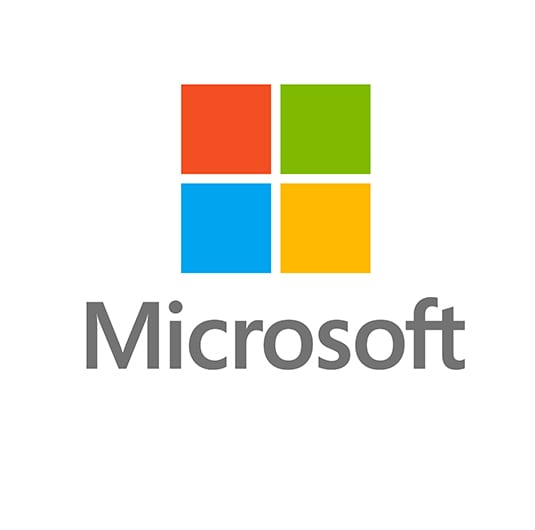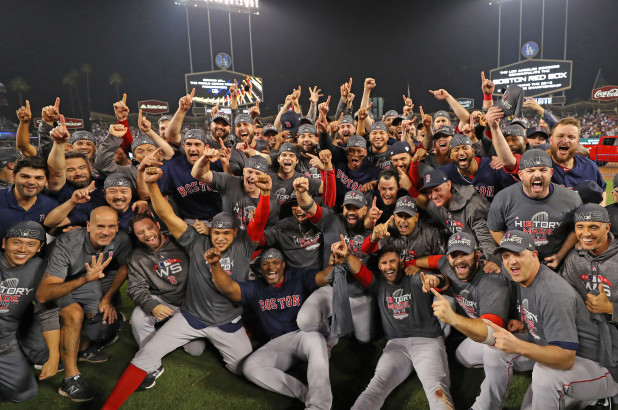by Tanner Gers
Has your organization truly embraced diversity and inclusion?
Do you have diverse, inclusive hiring practices?
When you hire qualified professionals, do you have inclusive digital, physical, and organizational supports in place for people of all abilities?
If not, your corporate culture isn’t as diverse and inclusive as it could be. And it absolutely should be.
Authentic inclusion and diversity is about tapping into the powerful people who happen to have a disability.
If “powerful people with disabilities” sounds like a total contradiction, then you may be blinded by generationally-imposed, antiquated beliefs, social stigmas, and outdated business practices. The same beliefs, stigmas and business practices that prohibit true diversity and inclusion.
Three big Return on Investment (ROI) wins inherent to holistic diversity and authentic inclusion of people of all abilities include:
- Overall stronger human capital and retention
- Increased organizational productivity and job satisfaction
- Improvements in workplace culture and team performance
Not too shabby, huh? Let’s investigate a little deeper and uncover how you and your organization can tap into some of this powerful performance.
So how does tapping into the awesome power of people with disabilities (PWD) positively contribute to organizations ROI?
Most businesses should be compliant with regulations mandated by the Rehab Act of 1973 and
the ADA of 1990.
(Thanks, Bush 41!)
The ADA literally and figuratively opened many doors for people with disabilities when it was created nearly 30 years ago.
This includes more accessible entryways, ramps and elevators in addition to stairs, wider doorways, accessible bathrooms, and the list goes on and on.
It was and is monumental for civil rights and equal rights for people of all abilities, especially those with mobility impairments who don’t have the luxury of using stairs to access physical buildings. Today people of all abilities benefit from, and enjoy, these accommodations designed to open doors of opportunity for the disability community.
Who hasn’t enjoyed the use of automatic doors when their hands are full, are pushing a baby stroller, or upon saying, “Open Sesame?.”
I know first-hand how inaccessible entryways complicate people’s lives from volunteering for
Easter Seals
at their Houston, Texas location while in middle school. We took our own man-made ramps everywhere we went because physical accessibility was not prominent like it is today.
Just like I had to do in middle school, and 30 years after the World Wide Web was created in 1989,the ADA of 1990 still struggles to open the virtual doors of accessibility in the digital age
of the 21st century for millions of people. I’m talking about websites, mobile apps, digital documents, and the intranets that nearly all of us use every single day at work. And since the ADA was established when cell phones doubled as blunt force objects, it’s application to today’s digital world is insufficient at best.
Today I can hail my Uber back to the office, send texts, emails, meeting invites, and update SalesForce while riding the elevator to the first floor 90 seconds after a face-to-face meeting, but Corporate America is lagging behind. The result? The unemployment rate for people with print disabilities is over 70%. The unemployment rate for people without disabilities is less than 4%. Going into 2019, why is it nearly impossible to start, let alone build, a career in Corporate America as a person who just happens to have a disability?
Is this the American Dream? Does this sound like diversity and inclusion at its finest?
When the largest minority group in America is viewed through lenses of social stigmas, antiquated beliefs and being “disabled,” you cannot see power, potential or ability.
Operationally, your vision becomes limited to risk saturated in liability, inability and disability.
However, if your organization was disability ready, authentically inclusive of people of all abilities, you’d be primed and ready to tap into the awesome power and talented pool of people who just happen to have a disability.
Close your eyes for a moment and imagine this. Wait. Cancel that. Imagine with me as you continue reading.
Envision a well qualified promising corporate Jedi who is different in just one way. They have a disability.

Photo Credit: AB Posters
Sitting in front of your HR sourcing representatives are the greatest cyber security geniuses of all time. They could be on the dark side, breaking your system, hacking into your mainframe, and stealing account information.
Instead, they’ve committed to using the Force for good; they’re cyber security Jedis. They’re ready and eager to work for you but there’s just one thing.
One has severe autism, another is totally blind, and another is a quadriplegic. And one of the Jedis might even have a couple of these powers.
What happens if you’re HR sourcing representative has never in their life met or spoken to a professional such as this powerful professional who just happens to have a disability.
Will they know what to say or how to say it? Will they be able to look beyond their unconscious bias and see a powerful professional? Most importantly, will they make the right decision for your company?
Chances are slim to none they won’t and I’m being generous.
Corporations embracing diversity and inclusion are only scratching the surface of disability readiness with recruitment.
Microsoft is one corporation who is motivated by a new vision of diversity, inclusion, and accessibility as they march toward disability readiness. And Microsoft started with recruitment.
Openly and honestly, Microsoft shares how they had a difficult time letting go of their coveted white boards for their in-person interviews.
Ultimately, they let them go because when a qualified candidate with quadriplegia or blindness comes through the door, it’s tough to demonstrate their Jedi ability if they can’t pick up the marker or see the white board!

Photo Credit: Allen Recruitment Consulting
“We learned that our traditional hiring process, the front door to Microsoft, could be a major barrier of entry for many talented candidates. By adjusting the shape of the door, we could help candidates showcase and demonstrate their talent to hiring managers,” said Neil Barnett, Director of Inclusive Hiring and Accessibility at Microsoft, in a recent interview.
But how did they bridge this gap in their recruitment practices? Microsoft found powerful leadership to help them navigate this uncharted territory. They worked with specific organizations who specialize in creating corporate cultures that are disability ready, diverse and authentically inclusive.
Today, Microsoft has established equitable inclusive recruitment practices that engage qualified candidates who just happen to have a disability.
To be truly disability ready, we must take an authentically holistic approach.
You may ask, But why? Why doesn’t it stop here at recruitment? I mean we just hired Rick — the cyber security Jedi who happens to be blind, or quadriplegic, or deaf, or autistic.
Because when Rick shows up the first day of orientation, he can’t register for health benefits, use the CRM, intranet programs, or do any essential job function on his computer.
In fact, he’s helpless. He’s disabled in the truest sense of the word.
Rick, the cyber security Jedi has been stripped of all his powers, potential, and hope.
The HR Director immediately addresses the issue with Rick. She promises the whole IT team is working hard on the issue and this will get resolved.
Two weeks later, Rick is informed there’s nothing they can do. It’s a tough conversation. He’s going home today without a job.
Microsoft’s commitment to authentic inclusion and holistic diversity is much stronger and more evolved than this unfortunate circumstance. An unfortunately true circumstance that occurs too often for people with disabilities.
I celebrate Microsoft and their on-going improvements in becoming more and more disability ready every day. Becoming disability ready takes commitment. It takes practice. It requires leadership and seeking outside help from experts. That’s exactly what Microsoft did.
Even if you follow this example, it doesn’t mean you won’t hit speed bumps or obstacles along the way. If it were easy, everyone would be doing it.
One of our industry partners, the Seattle Lighthouse for the Blind, initially struggled in helping Microsoft understand the problems surrounding their “front door.” And even though Microsoft embraced the changes, some they were resistant to some. In fact, when one blind new-hire was sidelined from work because they were unable to use the inaccessible intranets and internal programs necessary to do the job they were hired to do, the employee had to sit on the sideline.
The solution might seem too simple though.
When corporations implement equitable inclusive changes to organizational practices, from the board room to the mail room, they maximize outcomes for their most important investment; human capital.
This is where organizations miss the bullseye. It isn’t holistic, even if the intention is authentic. Because we don’t know what we don’t know.
What most companies don’t know the answers to include:
Are internal digital work environments (including intranet, team software, and CRM) fully accessible and usable by people with disabilities?
Do our employees have the training and confidence to engage, interact and enable their team members who happen to have a disability?
Has leadership ensured people with disabilities have clearly defined expectations and opportunities for upward mobility like everyone else?
In an emergency, how do we ensure everyone will be safe?
What is a reasonable accommodation? And how can we equip this qualified candidate with the right tools to achieve their highest potential?
Some might say it’s a disruptive approach. Others call it innovative. We just call it becoming disability ready.
Remember the three big wins of becoming authentically inclusive and enabling a diverse corporate culture?
There’s more fruit to harvest when you plant these inclusive seeds correctly, but here’s more on how you can see ROI in authentic disability readiness:
Overall stronger human capital and retention
Millennials and Gen Zs want to work for companies who are authentically inclusive and holistically diverse. Authentic inclusion and disability readiness ensures you’ll retain people with and without disabilities now and in the future.
Your highly talented Millennials and Gen Zs won’t be looking for an exit to the next organization to make a couple of extra bucks each pay period. The reason they’re more likely to submit their 2-week notice is because your organization isn’t in line with their values. When organizations publicly invest in the abilities of their human capital, the result is increased loyalty and retention.
Increased organizational productivity and job satisfaction
People with disabilities who hit deadlines, show up to work, and hustle hard with a smile on their face each day will fire up everyone on your team.
They push everyone to do more, be more, and produce more. Over time, you’ll notice your Key Performance Indicators ticking up.
You’ll also notice employee morale creeping up as job satisfaction increases.
People love working for an organization that recognizes people for the value they bring to the table. When organizations hire qualified candidates for their power and potential, and set them up to achieve success, everyone wins.
Improvements in workplace culture and team performance
People are more productive, creative and better team players in authentically inclusive cultures. People with disabilities are outside-the-box thinkers and solution developers because of the inaccessible and problematic situations they find themselves in on a regular basis.
This is a contagious mindset that translates to other team members in how they approach, conceptualize, and think through problems and situations.
This synergistically creates teams who work better together in a more cohesive culture.
Bonus: Being Disability Ready Helps Reduce Risk and Exposure to Litigation
According to
Acting Chair Victoria Lipnic
, the EEOC handled nearly 27,000 private sector disability charges under the ADA in fiscal year 2017; that’s approximately 32 percent of all charges. For 2018, that number is moving up to about 42%.
Here’s just a couple more reasons why smart organizations are adapting, pivoting, and tapping into powerful people with disabilities. But how do you make it happen?
How do you truly become authentically inclusive, holistically diverse and tap into this power?
It’s simple.
The greatest athletes can’t win the World Series on their own. They need the best coaches and leadership to show them how.

Photo Credit: Page Six
While we aren’t the best baseball coaches and we can’t lead your team to win the World Series, we are the best inclusion coaches in the world and we will lead your organization to being holistically disability ready.
Why? Because we live diversity, breathe inclusion, and we are an international nonprofit consulting agency who just happens to be led by people with disabilities.
Call us when you’re ready to work with the right Jedis to tap into the power of people with disabilities.
May the Force be with you…